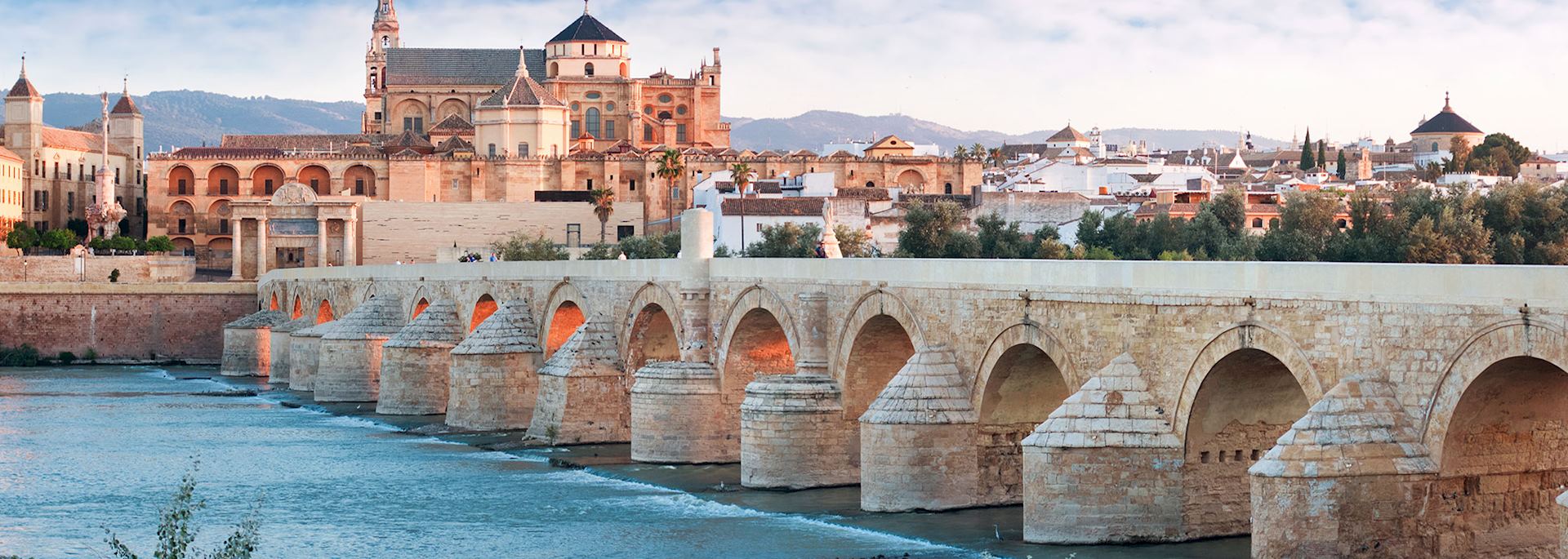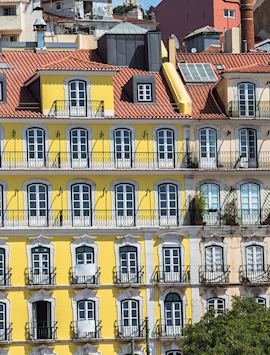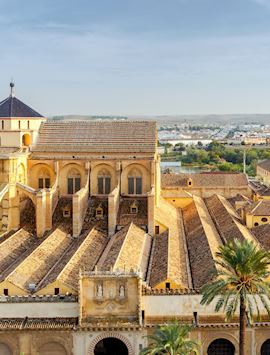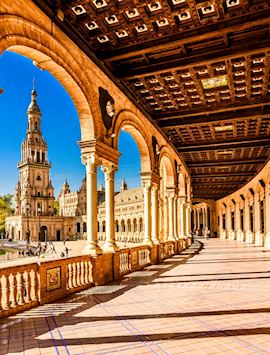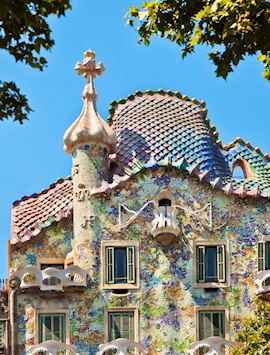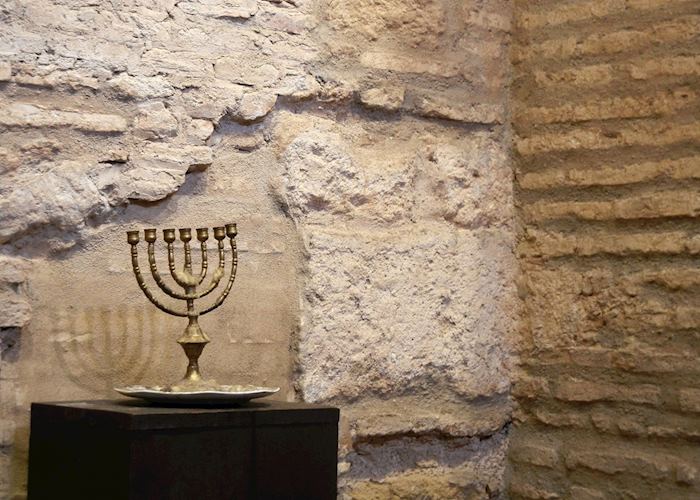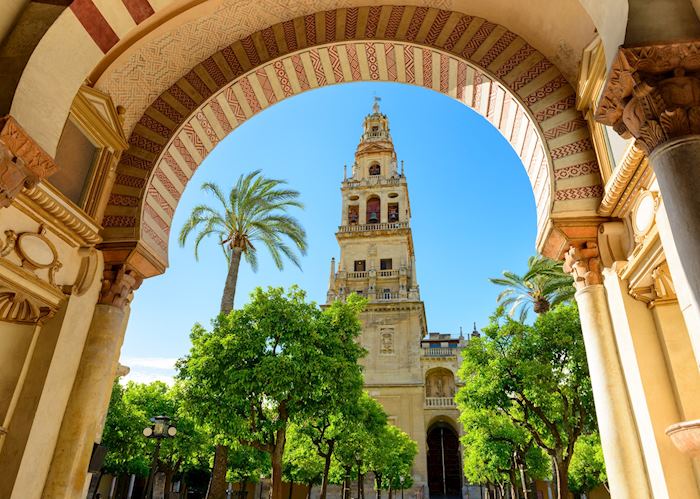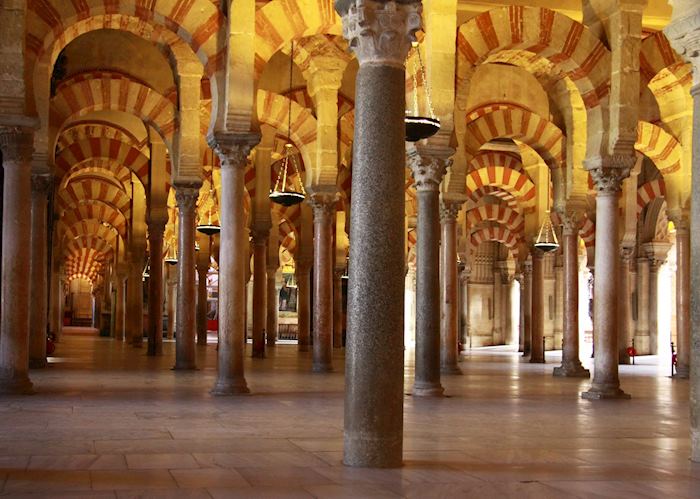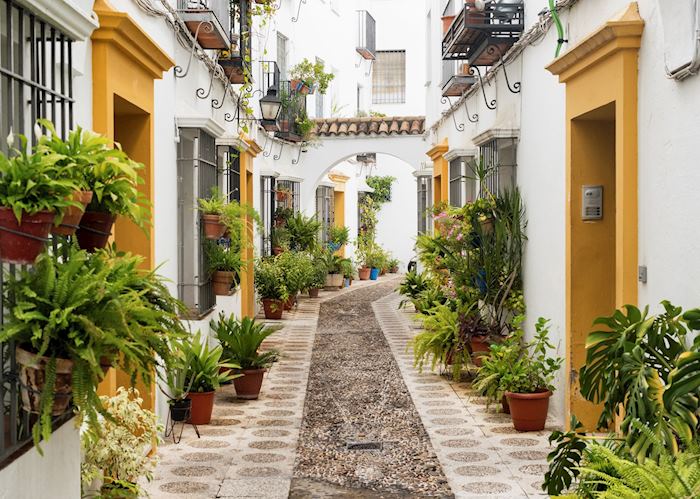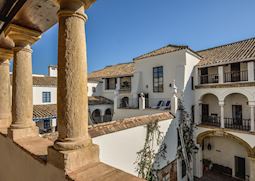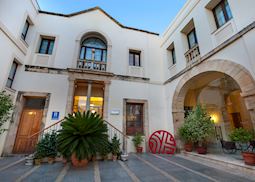Jump to:
Once the capital of Spain and the largest and most culturally advanced city in Western Europe, Córdoba has a labyrinthine historic district that radiates from its renowned mosque-cathedral. Between the 8th and 10th centuries, Córdoba was a city of intellectuals, filled with libraries, observatories, palaces and mosques. A place of pilgrimage, it had its own university, which attracted Jewish, Arab and Christian scholars.
Much of Córdoba’s medieval grandeur remains and wandering its maze of streets, small plazas and flower-filled courtyards will transport you to another era. The central Mezquita (mosque-cathedral) is the highlight in this UNESCO World Heritage city, but beyond it you’ll find an array of streets and squares, a host of characterful hotels and a great choice of restaurants and bars.
Córdoba’s Mezquita was founded in 785 but extended in the 9th and 10th centuries to cater for the city’s rapidly expanding population. The finesse of the architecture indicates just how sophisticated the city was at the time, and the double tiers of striped arches that alternate between red brick and white stone are now a symbol of the city.
 The arches become more elaborate as you approach the maksura, the screened-off space where the caliphs would have prayed. The horseshoe arch above the mihrab, the prayer niche positioned at the closest point to Mecca, is particularly intricate and topped by a dome decorated with delicate mosaic work.
The arches become more elaborate as you approach the maksura, the screened-off space where the caliphs would have prayed. The horseshoe arch above the mihrab, the prayer niche positioned at the closest point to Mecca, is particularly intricate and topped by a dome decorated with delicate mosaic work.
At the heart of the mosque, surrounded by a forest of pillars, sits a Christian cathedral constructed by Ferdinand III, King of Castile in the 16th century. A towering Baroque edifice, it contrasts awkwardly with the elegant mosque — an architectural assertion the king’s power over the Islamic community. Inside, it’s decorated with finely detailed stuccowork and woodcarving, and a jasper and marble retablo (the decorative panel behind the altar).
Ferdinand III was also responsible for building new defensive structures around the city in the 13th century, including the Alcázar (castle) just south of the Mezquita, which became the hub of the Inquisition. Today, it houses a royal bathhouse and a museum with a collection of Roman mosaics. Outside, the Alcázar’s carefully laid-out gardens, topiary hedges, ponds and fountains rival those of the Generalife in Granada.
To the north and west of the Mezquita you’ll find the city’s one-time Jewish quarter, known as Judería. The quarter reached its peak during the Umayyad caliphs (8th to 11th centuries), when the Moors’ cosmopolitan attitudes allowed many cultures to thrive side by side and Córdoba was the intellectual hub of the empire. For example, Talmudic philosopher Maimónides and Arab mathematician Averroès both lived and worked here during the 12th century, trading ideas back and forth.
However, infighting started the slow decline of the city’s intellectual period. When the Almohads took over the city, they exiled Maimónides to Egypt. The Reconquista reached Córdoba in 1236, and Córdoba’s influence continued to dwindle under the neglect of Catholic rulers. The fate of the Jewish quarter was sealed in 1492 with Spain’s expulsion of the Jews.
Today, it’s one of the city’s best places to wander, filled with wrought-iron doorways lining narrow streets and whitewashed houses that sport overflowing window boxes.
One of quarter’s highlights is a 14th-century synagogue, one of just three pre-Inquisition examples that still survive in Spain. A small, probably private temple, it’s remarkably well preserved, probably thanks to its latter-day conversion to a hospital for those suffering from rabies.
The stuccowork is wrought into intricate Mudéjar patterns and inscriptions in Hebrew — a physical example of the blending of the cultures that’s defined Córdoba. Additionally, you can still see the second-storey gallery where the women worshipped and the niche where the hekhal (arc containing the scrolls of the Torah) was kept.
South of the Judería, at the river, you can see a Roman bridge and an Islamic waterwheel, while on the far side of the bridge is the Torre Calahorra, a 14th-century tower that houses a museum looking at Córdoba’s great intellectual achievements in medieval times.
Venture beyond most streets directly around the Mezquita and you’ll find Córdoba’s inherent beauty in its medieval lanes lined with honey-stone buildings and its little squares and courtyards festooned with flowers. Córdoba’s patios, the private courtyards you’ll see on almost every street, burst into bloom in May. To coincide, the city hosts a floral competition and patios open to the public are indicated with signs.
Best time to visit
April to June is a good time to go to Córdoba, when temperatures are tolerable and the city’s balconies and courtyards are strewn with flowers. July to August can be incredibly hot for exploring on foot, while September and October are popular and still warm.
who's been there
-
01993 838 92501993 838 081
- Make an enquiry
Suggested itineraries featuring Córdoba
Our itineraries will give you suggestions for what is possible when you travel in Córdoba, and they showcase routes we know work particularly well. Treat them as inspiration, because your trip will be created uniquely by one of our specialists.
Photos of Córdoba
Accommodation choices for Córdoba
We've selected a range of accommodation options for when you visit Córdoba. Our choices usually come recommended for their character, facilities and service or location. Our specialists always aim to suggest properties that match your preferences.
-
![Hotel Las Casas de la Judería de Córdoba, Córdoba]()
-
![NH Collection Amistad Córdoba, Córdoba]()
NH Collection Amistad Córdoba
Córdoba -
![Hospes Palacio del Bailío, Córdoba]()
Hospes Palacio del Bailío
Córdoba
